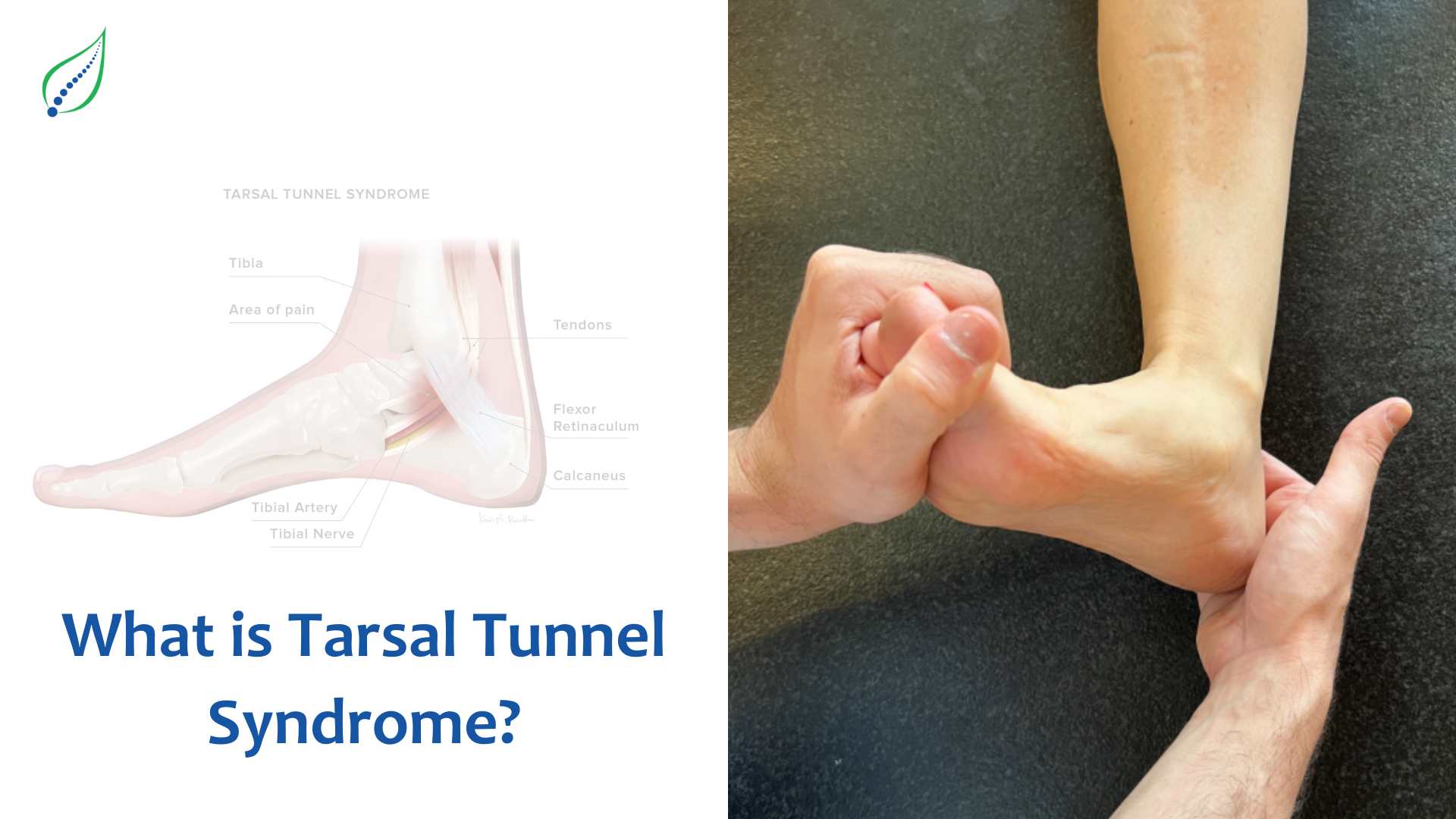What is Tarsal Tunnel Syndrome?
If you're experiencing pain, numbness, tingling, or burning sensations in your foot, you may have a condition called tarsal tunnel syndrome. This painful disorder affects the tibial nerve which runs along the inside of the ankle into the foot.
When this nerve gets compressed or damaged, it can cause uncomfortable symptoms. Keep reading to learn more about tarsal tunnel syndrome.
What is Tarsal Tunnel Syndrome?
The tarsal tunnel is a narrow passageway located on the inside of the ankle, just behind the medial malleolus (the bony protrusion on the inside of the ankle). Several tendons and the tibial nerve pass through this tunnel as they extend into the foot. Tarsal tunnel syndrome occurs when there is increased pressure on the tibial nerve within this space, often due to inflammation or injury of the surrounding structures. This leads to compression and damage to the nerve over time.
What Are the Symptoms?
Many people with tarsal tunnel syndrome experience a burning, shooting pain or strange electrical sensations on the inside of the ankle or along the bottom of the foot. This discomfort may radiate out to the toes. Numbness and tingling in these areas is also common.
In some cases, people lose sensation in parts of their foot temporarily. Symptoms tend to come and go, and are often aggravated by activity. Prolonged standing or walking can really intensify the discomfort. At night, symptoms may act up and disturb sleep.
What Causes Tarsal Tunnel Syndrome?
There are several possible causes of nerve compression in the tarsal tunnel area. Causes include:
- Ankle sprains - Previous injuries like fractures or dislocations put pressure on the nerve.
- Flat feet/overpronation - The excessive foot motion places strain on the nerve.
- Arthritis - Inflammation related to osteoarthritis or rheumatoid arthritis can compress the nerve.
- Bone spurs - Extra bone growth along the ankle bones irritate surrounding structures.
- Varicose veins - Swollen, enlarged veins put pressure on the tarsal tunnel.
- Diabetes - Nerve damage related to diabetes makes the tibial nerve more susceptible to injury.
- Tight calf muscles - Short, contracted muscles increase strain and compression on the nerve.
In some cases, an underlying cause is never found. Increased pressure in the area due to overuse, repetitive motions, or poor biomechanics over time may be enough to damage the tibial nerve.
How is Tarsal Tunnel Syndrome Diagnosed?
If you have chronic foot pain or other unusual symptoms, see your doctor right away. Your physician will review your medical history and conduct a physical exam of your foot and ankle. Touching or tapping along the nerve pathway often reproduces the pain. Range of motion and strength tests may reveal abnormalities. Your doctor will check for signs of flat feet, arthritis, muscle tightness or atrophy, and circulation/vascular problems as well.
Nerve conduction velocity (NCV) studies are typically ordered to confirm nerve compression and assess the severity of damage. Ultrasound or MRI scans provide detailed images to pinpoint potential sources of nerve pressure in the tarsal tunnel region. Blood tests help rule out diabetes, arthritis, and other medical conditions that could contribute to symptoms. Proper diagnosis is key so treatment can focus on the root cause.
How is Tarsal Tunnel Syndrome Treated?
The best treatment approach depends on the individual patient and the underlying reason for tibial nerve compression. Mild cases may resolve with conservative treatments:
- Rest/Immobilization - Taking pressure off the area using a walking boot, or crutches can calm inflammation.
- Icing - Icing decreases swelling and reduces inflammation to relieve pressure on the nerve.
- NSAIDs - Anti-inflammatory medications ease discomfort and swelling.
- Steroid Injections - Cortisone shot reduces inflammation on a compressed nerve.
- Orthotics - Custom shoe inserts support the arch and correct overpronation issues.
- Physical Therapy - Stretching the calf muscles brings relief by releasing nerve pressure.
How to Prevent Tarsal Tunnel Flare-Ups?
While not all cases of tarsal tunnel syndrome can be prevented, it’s important to take care of your feet to avoid aggravating the condition. Try these proactive tips:
- Warm up ankles/calves before activity
- Stretch the Achilles tendon and calf muscles
- Wear proper-fitting supportive shoes
- Use custom orthotics if you have flat feet
- Lose weight if overweight
- Check feet routinely for signs of injury
- Get prompt treatment for foot/ankle injuries
- Manage chronic medical conditions (diabetes, arthritis)
By understanding the signs of tarsal tunnel syndrome, getting a proper diagnosis, and pursuing appropriate treatment, you can minimize neuropathy pain and get back to comfortable walking. Pay attention to foot symptoms and see your doctor if discomfort persists for more than a week or two to address the problem early. Catching nerve compression quickly leads to the best outcomes.




